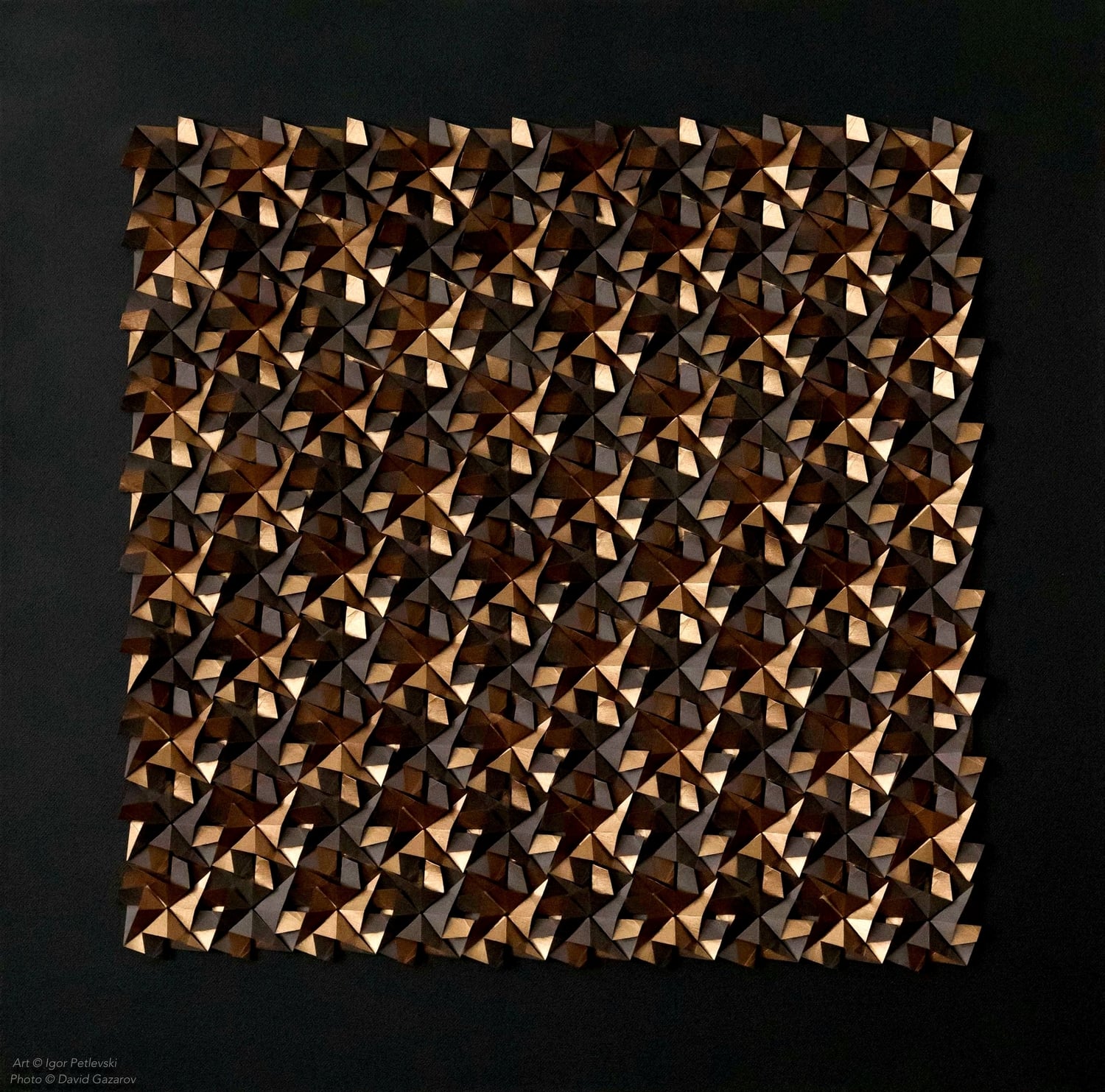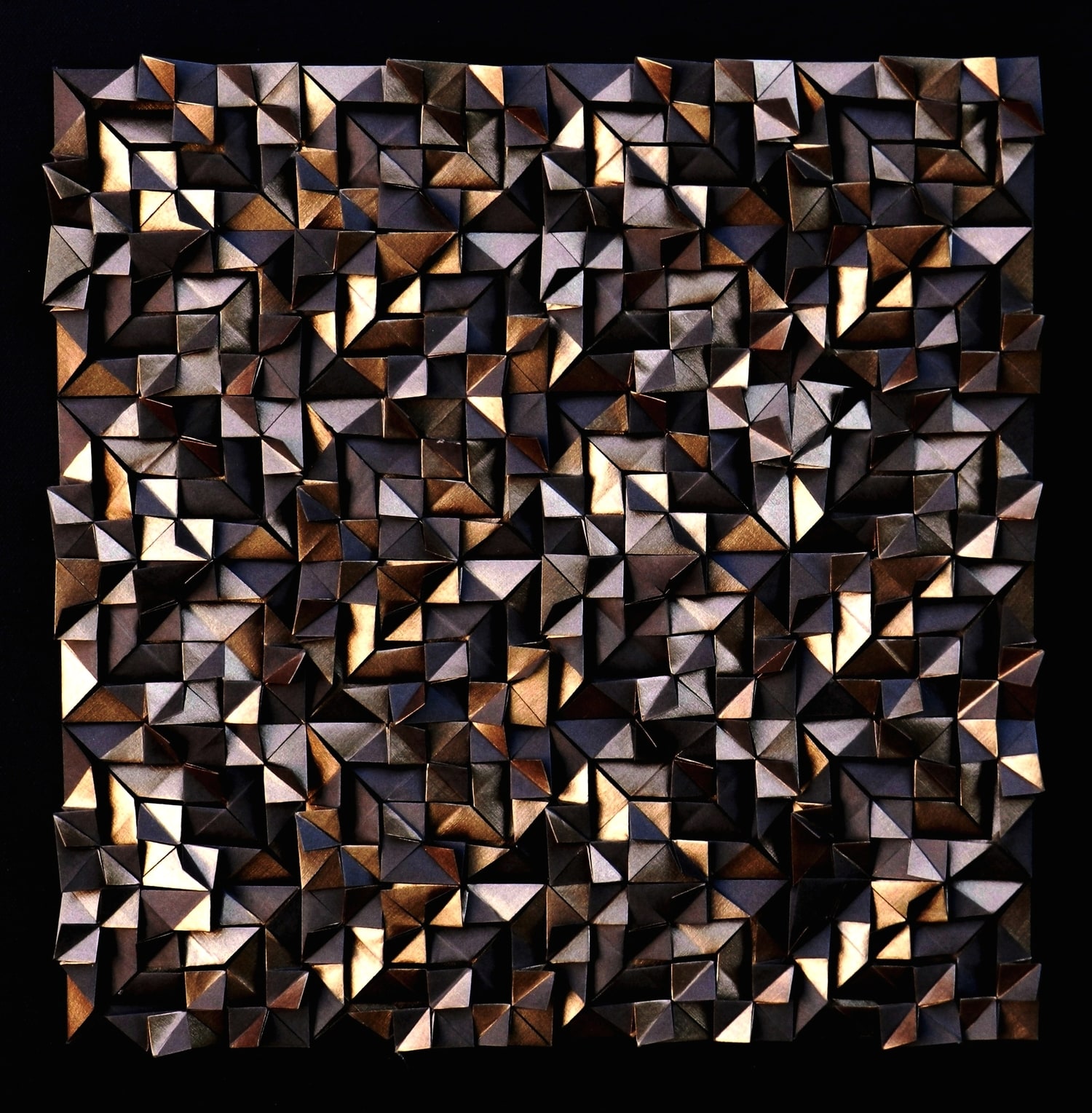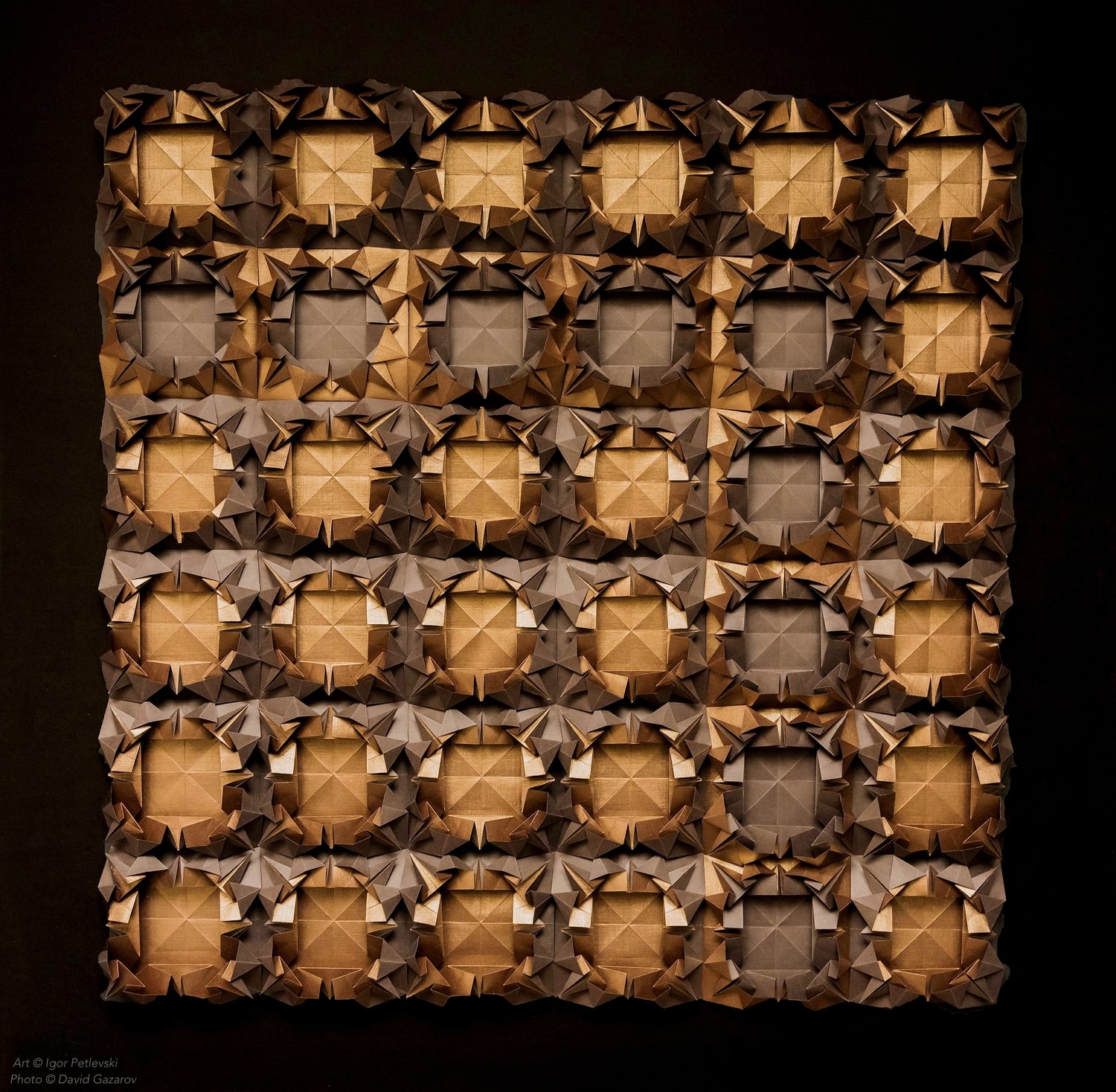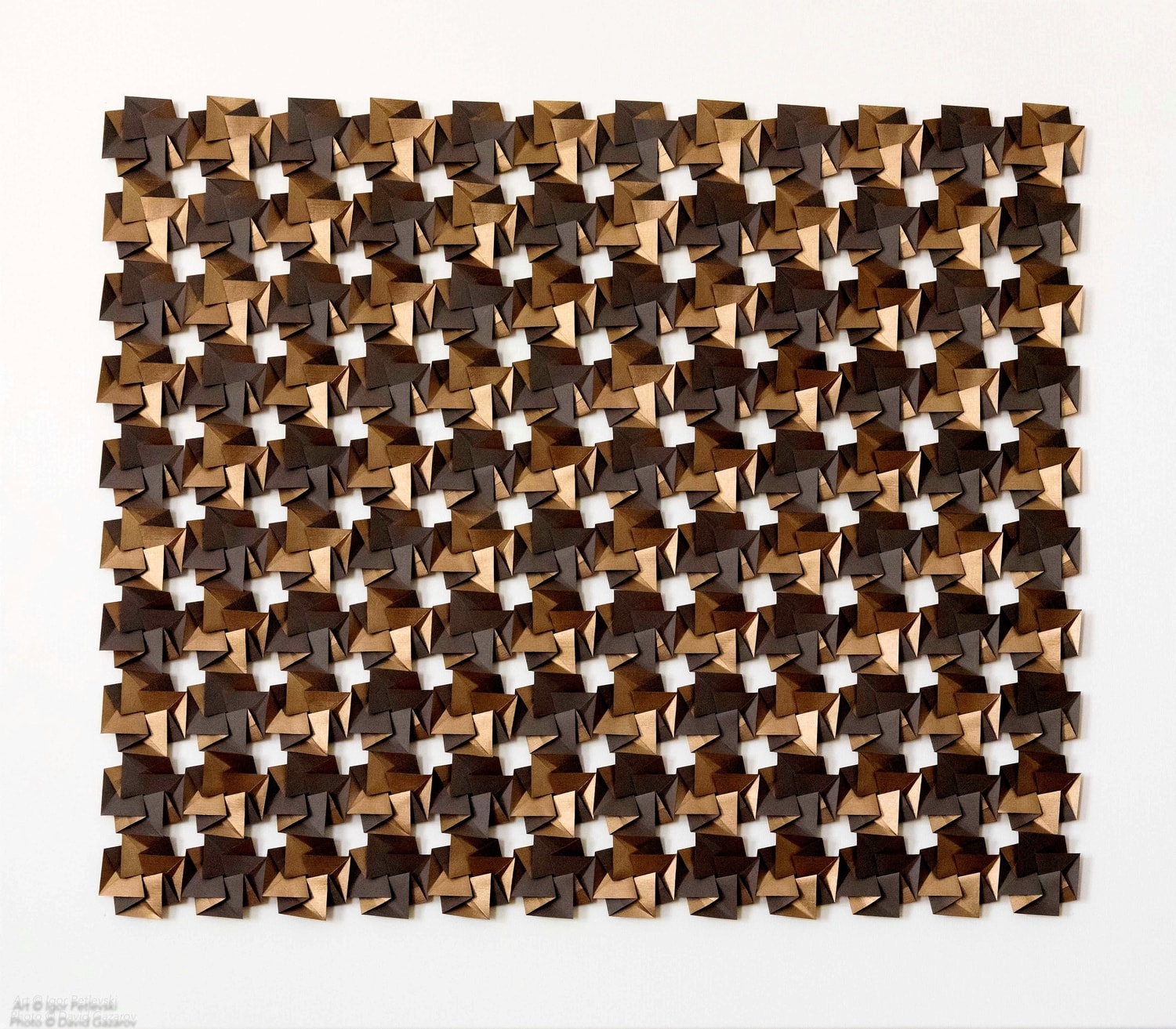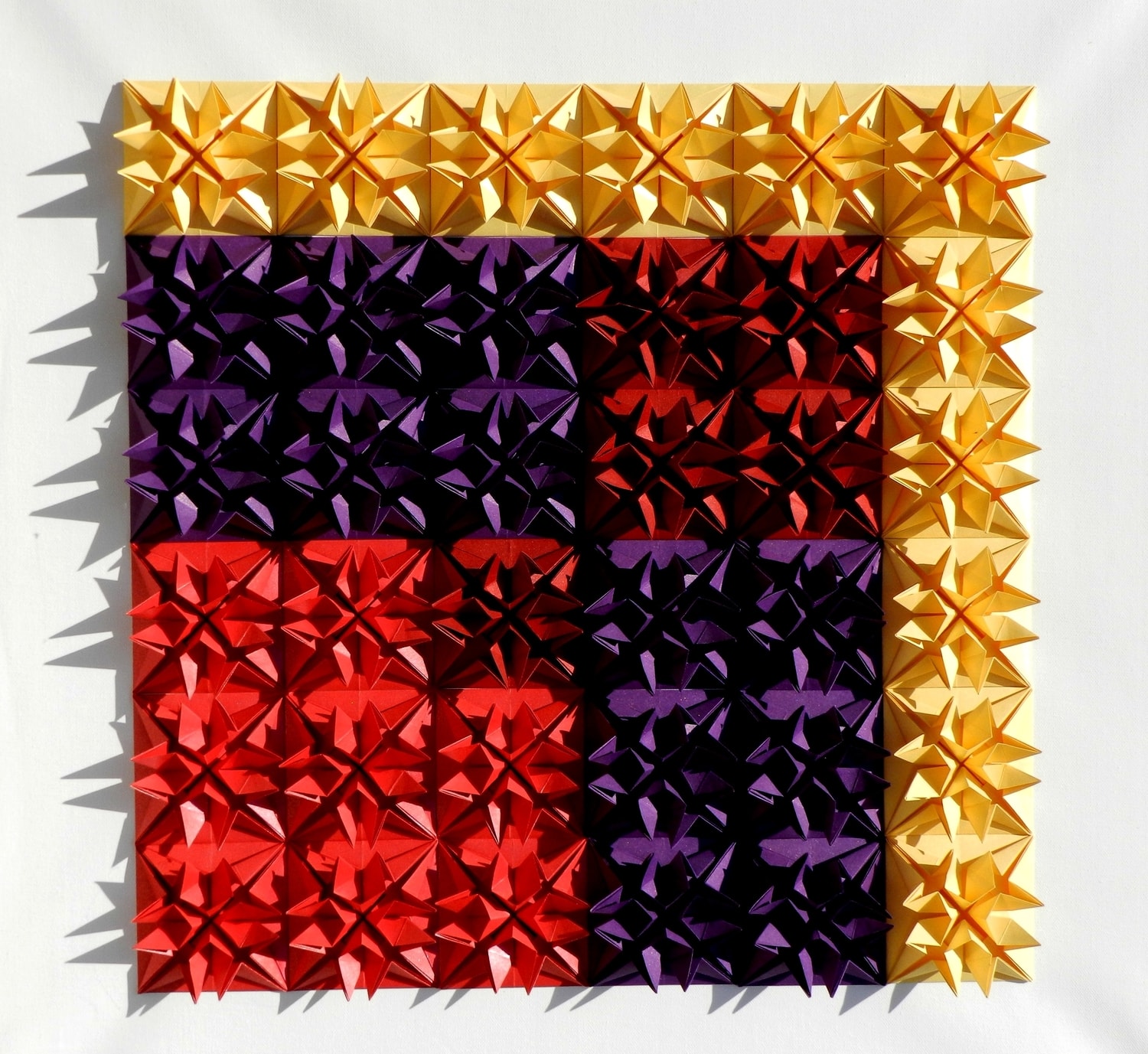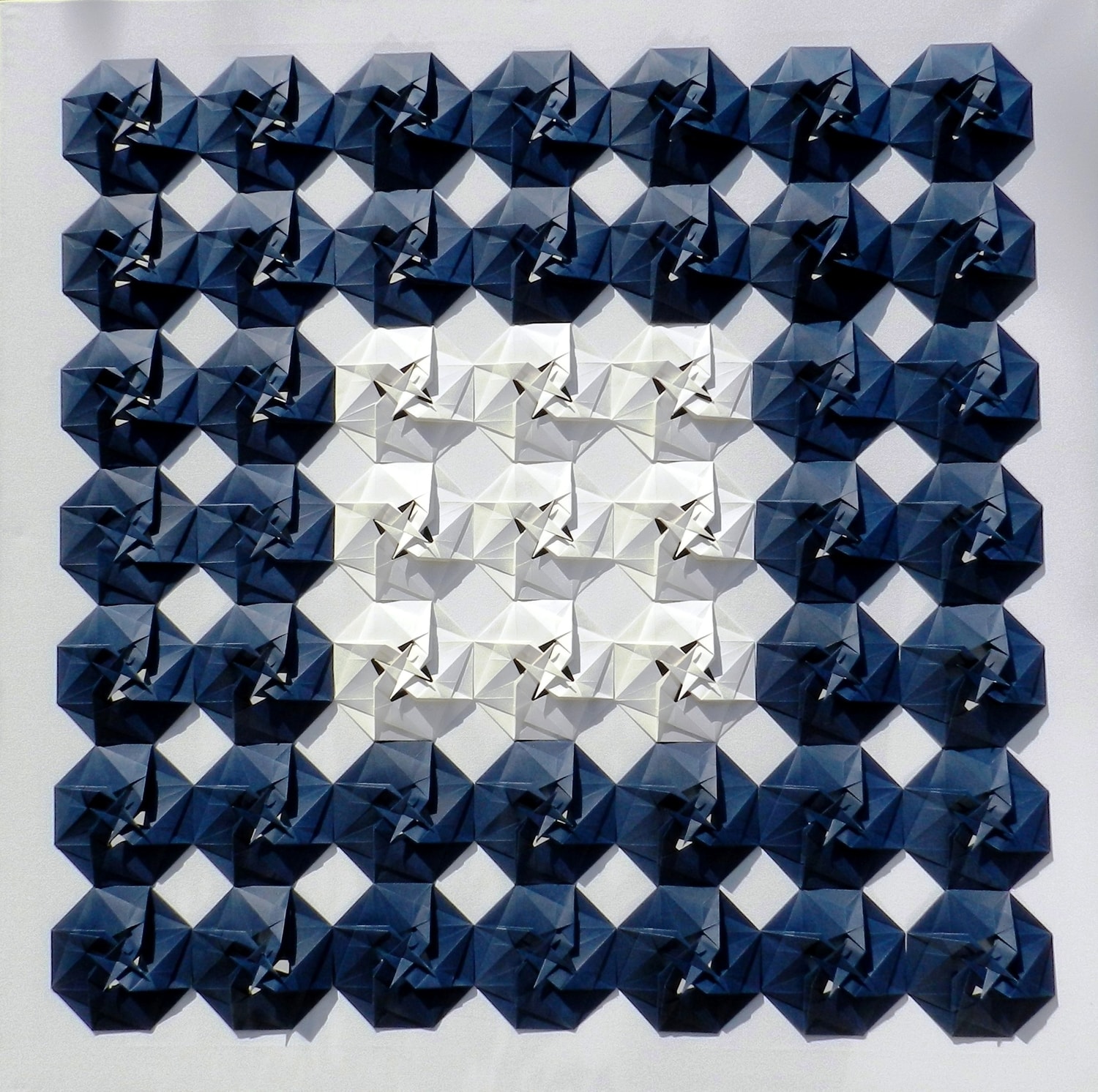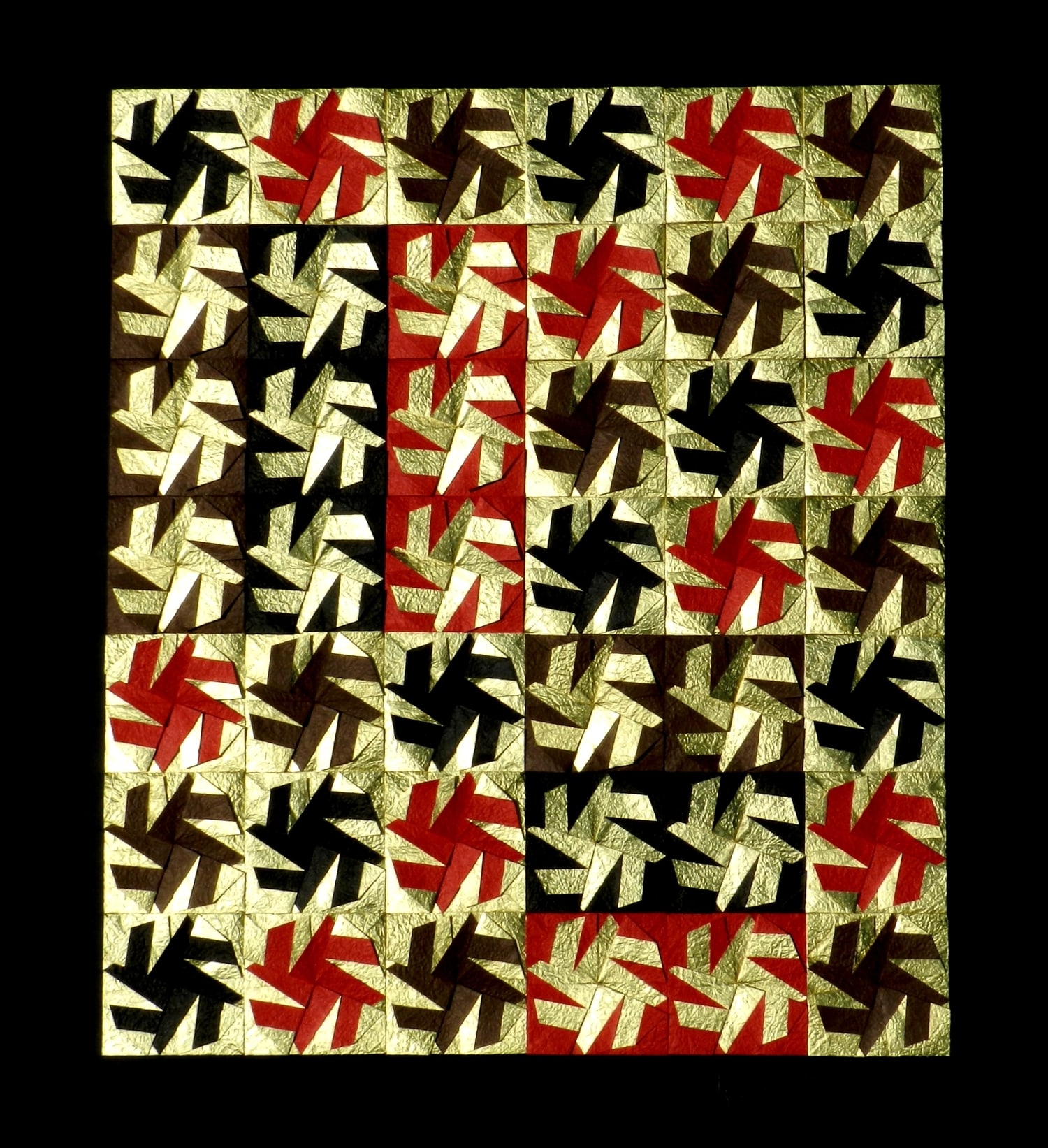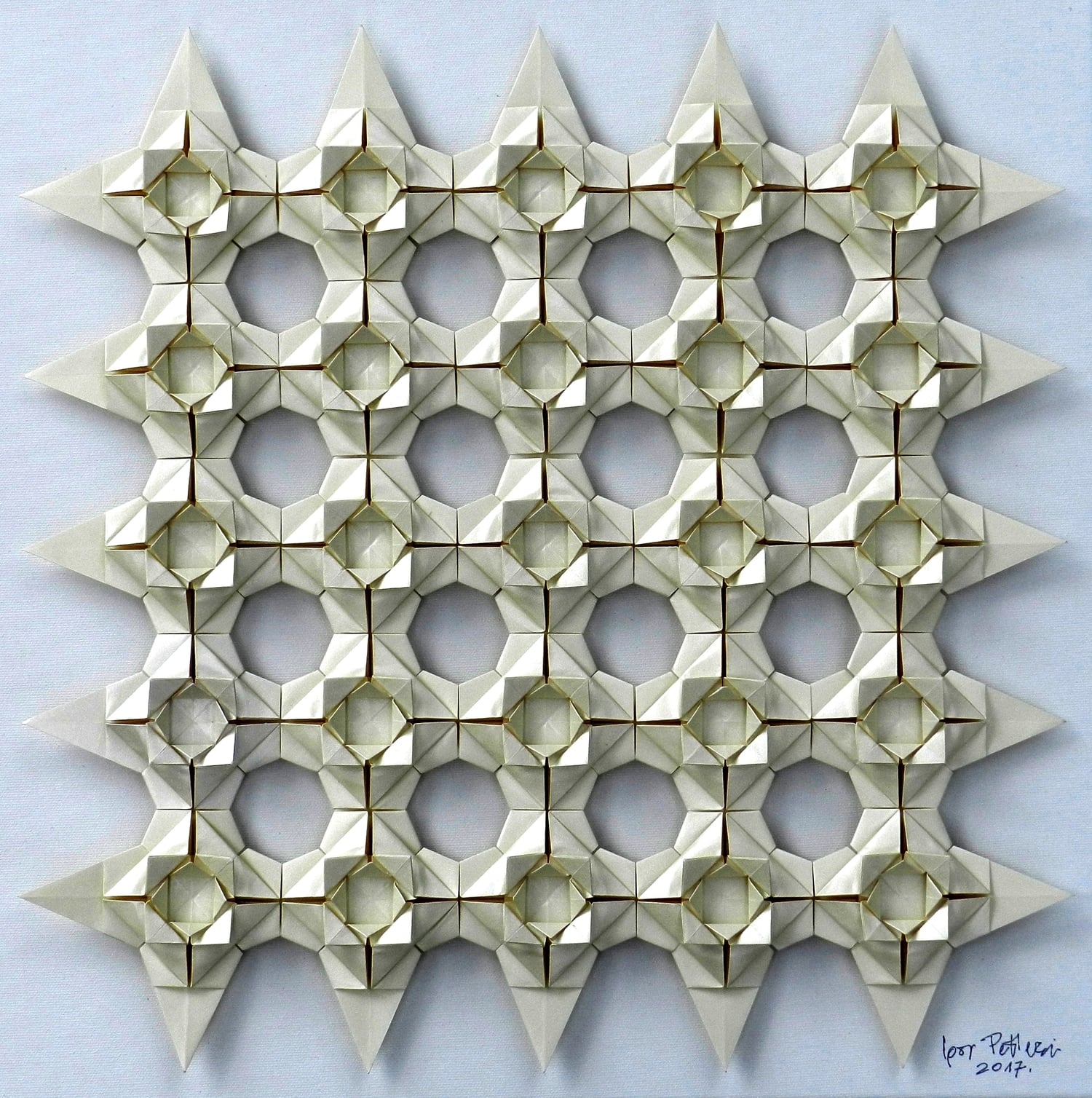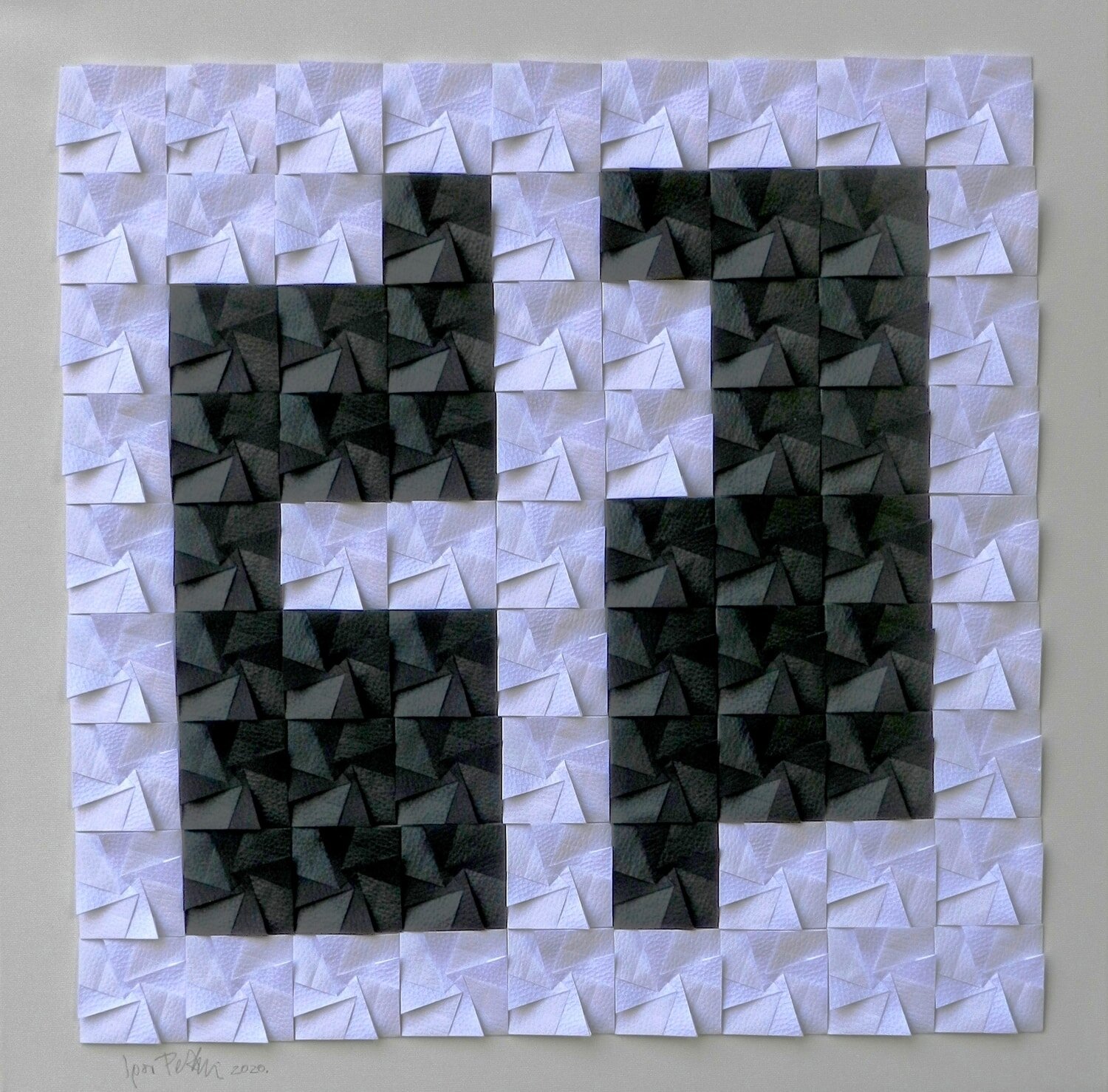
Hotel Westin Zagreb, Japan Week, 2.-8. March 2019
Origami that, more or less compromisingly, breaks away from the constraints of figuration, represents a step forward in the consideration of those origami authors who, after they have completed the figurative part of their work, explore new ways and discover new possibilities of expression.
What I call origami graphics is a set of my works consisting of a series of nonfigurative, symmetrical elements composed by strict origami technique, mostly identical, single-color or two-tone, that are arranged side by side on the canvas (origami on canvas) or any other flat surface. The effect of light and shadow that can be achieved in this way using the "depth" of origami elements, and diversity of ornamented forms that arise from their merge, makes origami graphics the most interesting and the most personal artistic expression for me.
In the second version, the non-figurative origami elements are pressed under the glass so there is not a 3D effect, but what comes to the forefront is the paper texture and various combinations of different two-tone surfaces.
Origami koji, više ili manje kompromisno, prekida vezu s figurativnim, predstavlja korak dalje u promišljanju onih origami autora koji su, uglavnom, zaokružili svoj figurativni opus pa traže nove putove i otkrivaju nove mogućnosti izražavanja.
Origami grafikama sam nazvao svoje radove koji se sastoje od niza nefigurativnih, simetričnih elemenata složenih strogom origami tehnikom, uglavnom identičnih, jednobojnih ili dvobojnih, koji su poredani jedan do drugog na slikarskom platnu (origami na platnu) ili nekoj drugoj ravnoj podlozi. Efekt svjetla i sjene koji se može postići na ovaj način koristeći „dubinu“ origami elemenata, te raznovrsnost ornamentiranih oblika koji nastaju njihovim spajanjem, čini origami grafike meni najinteresantnijim i najosobnijim likovnim izrazom.
U drugoj varijanti nefigurativni origami elementi su pritisnuti staklom tako da izostaje 3D efekt, ali do izražaja dolazi tekstura papira i kombinacije različitih dvobojnih ploha.

